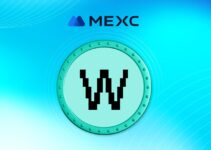In the past few years of blockchain development, Layer 1 and Layer 2 tracks have flourished, and the Layer paradigm keeps developing. Last year, Ethereum scaling solution StarkWare revealed multiple Layer 3 concepts and ecosystems planning, each dedicated to a different use case. In October this year, zkSync also announced that they are developing a layer 3 chain called “Opportunity”, which aims to further improve the scalability of the zkSync blockchain infrastructure.
What is Layer 3 and what are its advantages? Before introducing Layer 3, let’s re-understand Layer 1 and Layer 2.

Layer 1 refers to public chains that do not need to be built on other chains and can operate completely independently, such as ETH, Solana, Avalanche etc. Take Ethereum as an example, Ethereum is now the platform that runs the most smart futures and DAPPs, and it is also the public chain with the largest locked-up encrypted assets and transaction volume. With the explosive growth of the crypto market in recent years, the magnitude of activities such as on-chain transfers and future calls are also increasing. Even when the market is not so good, users still need to face the problems of network congestion and high gas costs. Hence, how to solve Ethereum’s expansion problem has always been one of the key issues in the encryption community, and this is the reason of the birth of Layer 2.
Layer 2 is an independent ecosystem built on Ethereum, relying on Ethereum to ensure security. In essence, Layer 2 is to strip and layer the functions of the public chain, leave the consensus mechanism that provides security in Layer 1, and delegate the calculation and execution to Layer 2. It lets the public chain to become the settlement layer of Layer 2, so as to achieve the purpose of completing a large number of transactions quickly and at low cost.
If Layer 1 is compared to a road, as its ecology becomes more and more abundant, that is, more vehicles will drive on the road, and the congestion eventually increases. Layer 2 plays a diversion role, which it is equivalent to the viaduct built on this highway.
Then what is Layer 3? Let’s take a look at the summary of Layer 3 by Vitalik, the founder of Ethereum: “Layer 2 is used for expansion, and Layer 3 is used for customizable expansion. This customization accurately matches the special scenarios used by users and the application direction preferred by developers. At the same time, Layer 3 has the feature of weak trust extension, which leaves data availability to trusted third parties or committees, further protecting user privacy and use security.”
In short, Layer 3 is actually built on the basis of Layer 1 and multiple Layer 2. It directly faces C-end users, and can bring higher-level expansion solutions. Although Layer 2 can maximize operational efficiency, it cannot meet the needs of highly customized application scenarios. However, Layer 3 provides personalized services as an independent layer, which can bring users a better trading experience.

Starkware’s vision for L3
Starkware believes that Layer 3 has the following main advantages:
- 1. Hyperscalability: leverage the multiplicative effect of recursive proofs;
- 2. Greater control by the application designer of the technology stack:
- More deterministic performance and cost;
- Custom data availability models (e.g. Validium-based or application-specific on-chain data compression)
- Faster functional and technical speed (for example, introducing new features that are not yet ready for general availability);
- 3. Privacy: For example, zero-knowledge proofs are applied to privacy-preserving transactions on public Layer 2;
- 4. Cheaper/Easier Layer 2-Layer 3 interoperability: Deposit and withdrawal operations between Layer 1 and Layer 2 are currently prohibitively expensive. In contrast, due to the cost-effectiveness of Layer 2, when these processes are applied to Layer 3, they are not only very attractive, but also easy to implement. While the latency of moving assets between Layer 2 and Layer 3 can be higher than the latency of moving between applications deployed on the same Layer 2, the cost and throughput advantages are comparatively huge.
- 5. Cheaper/Easier Layer 3-Layer 3 Interoperability: A standalone Layer 3 will interoperate through Layer 2 rather than Layer 1, which is obviously cheaper than its Layer 1 counterpart. Without Layer 3, they would all operate as Layer 2 and thus have to interoperate via the rather expensive Layer 1.
- 6. Layer 3 as a “canary” network for Layer 2: New innovations may be tested on Layer 3 (similar to Kusama’s role in Polkadot) before a deliverable is made available to the public on Layer 2 or Layer 3.
Starkware also proposed some ideas for the Layer 3 ecosystem:
- StarkNet with Validium data availability, for example, to be commonly used for applications that are extremely pricing sensitive.
- Application-specific StarkNet systems tailored for better application performance, for example, by employing specified storage structures or data availability compression.
- StarkEx systems (such as those serving dYdX, Sorare, Immutable, and DeversiFi) with Validium or Rollup data availability immediately bring the proven scalability benefits of StarkNet. StarkEx is currently operating as Layer 2 and will be migrating to Layer 3.
- Private StarkNet examples, Layer 4 built on Layer 3 allow privacy preserving transactions without including them in the public StarkNet.
In short, Layer 3 has the advantages of high calculation volume, large-capacity carrying capacity, and personalized customization, which is expected to improve the application level of the blockchain industry. The Layer 3 hierarchical model is an excellent solution to capacity expansion, and it is only a new starting point for the development of the industry. With the improvement and maturity of technology, more additional layers such as Layer 4 and Layer 5 will appear in the future, which are expected to become an important part of the underlying logic of technology development in the Web3 era.
Join MEXC and Start Trading Today!



